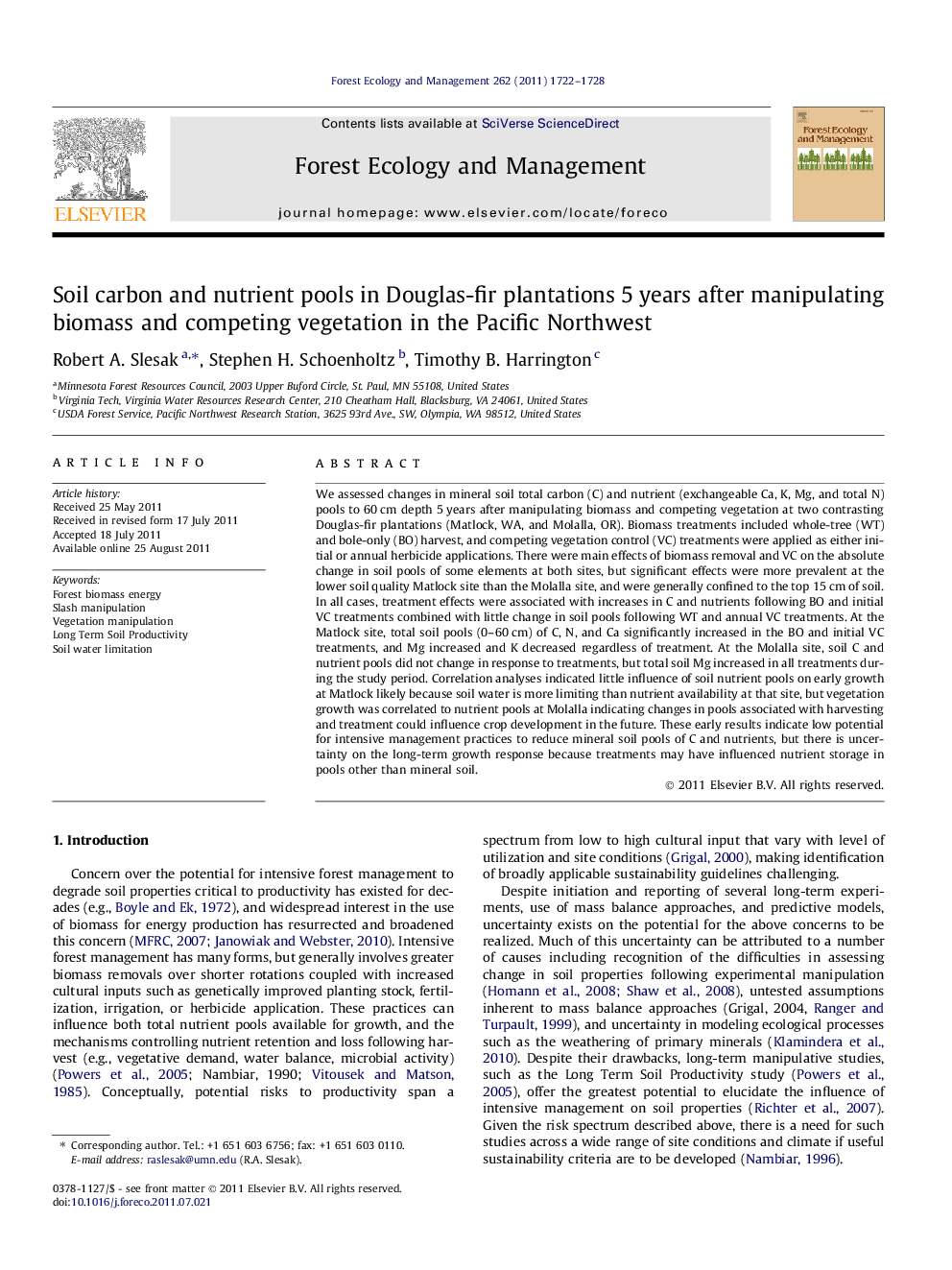| Article ID | Journal | Published Year | Pages | File Type |
|---|---|---|---|---|
| 87587 | Forest Ecology and Management | 2011 | 7 Pages |
We assessed changes in mineral soil total carbon (C) and nutrient (exchangeable Ca, K, Mg, and total N) pools to 60 cm depth 5 years after manipulating biomass and competing vegetation at two contrasting Douglas-fir plantations (Matlock, WA, and Molalla, OR). Biomass treatments included whole-tree (WT) and bole-only (BO) harvest, and competing vegetation control (VC) treatments were applied as either initial or annual herbicide applications. There were main effects of biomass removal and VC on the absolute change in soil pools of some elements at both sites, but significant effects were more prevalent at the lower soil quality Matlock site than the Molalla site, and were generally confined to the top 15 cm of soil. In all cases, treatment effects were associated with increases in C and nutrients following BO and initial VC treatments combined with little change in soil pools following WT and annual VC treatments. At the Matlock site, total soil pools (0–60 cm) of C, N, and Ca significantly increased in the BO and initial VC treatments, and Mg increased and K decreased regardless of treatment. At the Molalla site, soil C and nutrient pools did not change in response to treatments, but total soil Mg increased in all treatments during the study period. Correlation analyses indicated little influence of soil nutrient pools on early growth at Matlock likely because soil water is more limiting than nutrient availability at that site, but vegetation growth was correlated to nutrient pools at Molalla indicating changes in pools associated with harvesting and treatment could influence crop development in the future. These early results indicate low potential for intensive management practices to reduce mineral soil pools of C and nutrients, but there is uncertainty on the long-term growth response because treatments may have influenced nutrient storage in pools other than mineral soil.
► Soil C and nutrients increased with biomass retention and initial vegetation control. ► No reduction in soil pools with biomass removal and annual vegetation control. ► Significance of effect more pronounced at site with relatively small nutrient pools. ► Early growth limited more by water at low soil quality (SQ) site, nutrients at high SQ site. ► Low potential for reductions in soil pools, but long-term growth response unclear.
